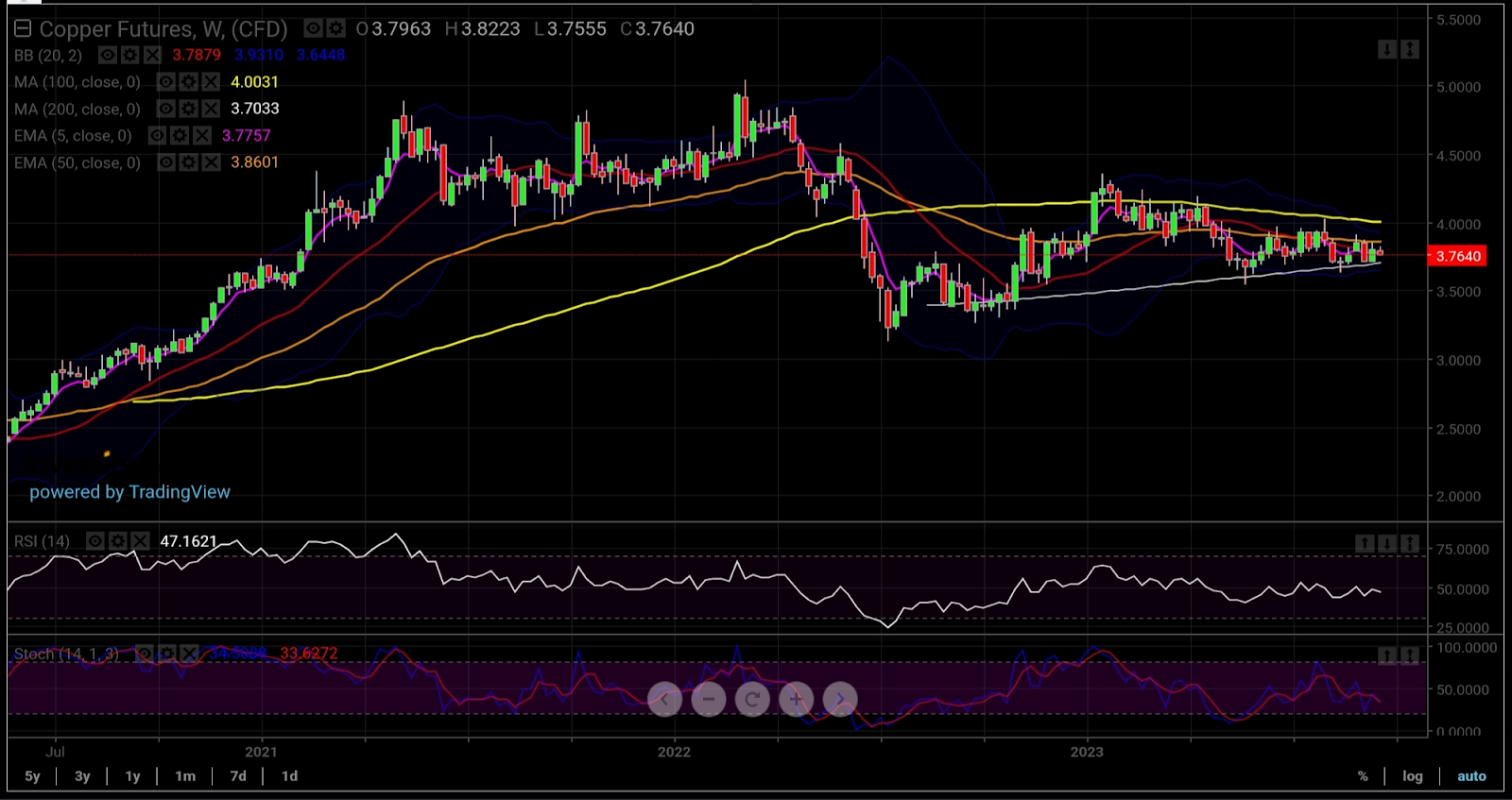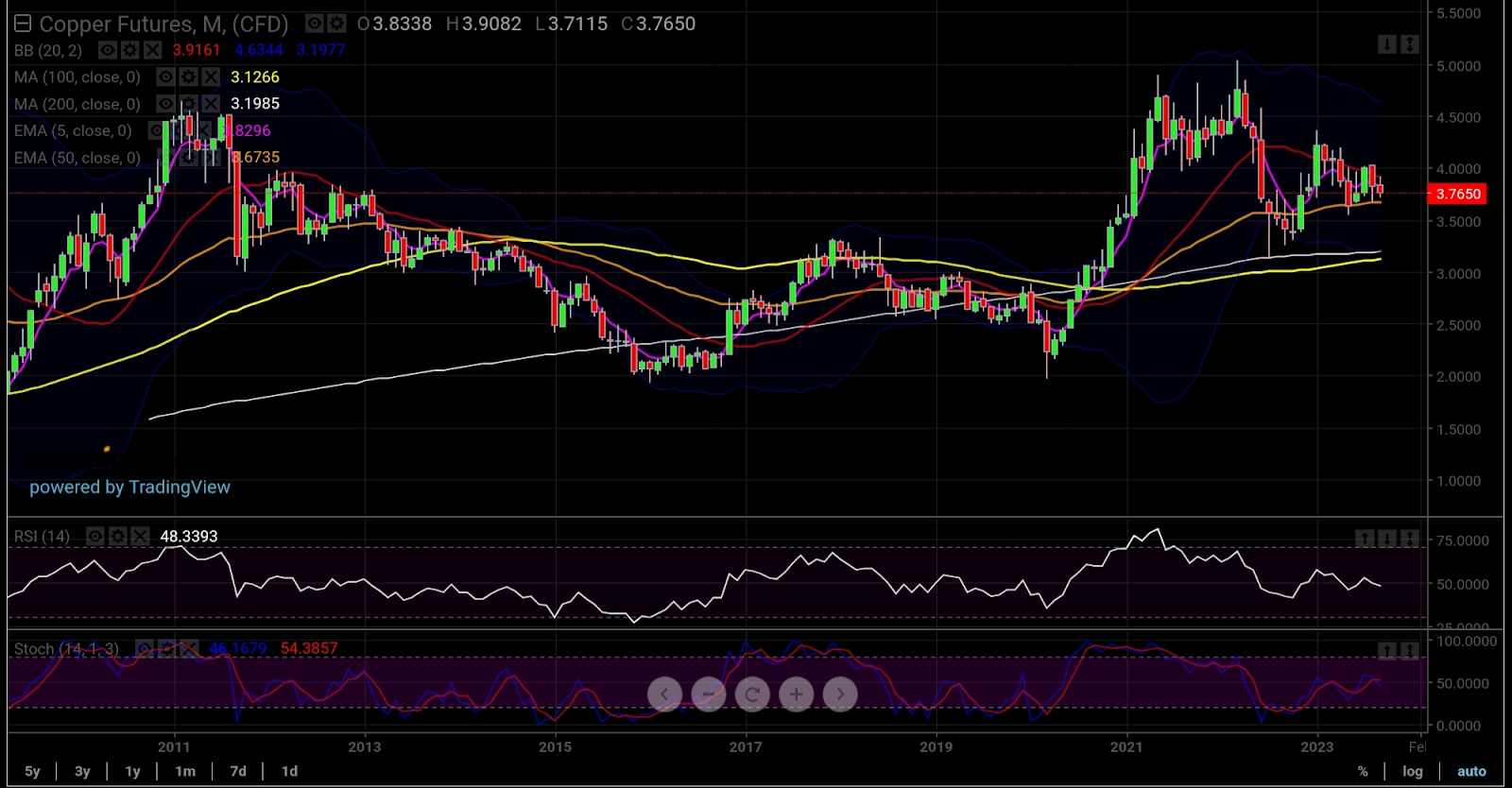ION expands ETF trading capabilities with Tradeweb integration
- Top base metal remains super sensitive to gyrations in China’s property market
- Copper needs weekly close above $4/lb to sustain a breakout, charts show
- Slide below $3.70 could take it all the way down to $3.20
It was the best data in a while in a country starved of good economic news: China reported on Friday that its industrial output grew 4.5% in August from a year earlier, versus a forecast 3.9%. Retail sales expanded by 4.6%, beating an expected increase of 3%,
Crude oil, rallying for a third week in a row, added almost 4% in the latest week as it responded to the numbers from the world’s top importer of the commodity. Copper, which owes half of its consumption in the refined form to China, did commendably, too, rising 2.3% on the week.
But that’s where the parallels between the two ended.
The oil rally continued with little disruption this week in what is admittedly an extraordinary set of circumstances for any commodity now, given the super squeeze on crude supply applied by the Saudis and Russians.
Charts by SKCharting.com, with data powered by Investing.com
Copper, however, gave back more than half of last week’s rally in just a day, with the catalyst for the downturn being the same China that bulls premised the earlier run-up on.
While previously, it was good news on industrial output and retail sales, this time, it was renewed concerns over the health of China’s too-big-for-its-own-good property sector.
China’s property market faces a new test this week with more bond payments due for embattled developer Country Garden Holdings. Chinese authorities also detained employees of China Evergrande (HK:3333) Group's wealth management unit, spurring concerns over renewed government scrutiny on the property sector.
The People’s Bank of China is widely expected to keep its loan prime rates at record lows this Wednesday as it moves to shore up economic growth. But despite stimulative measures, the outlook for China’s property market, which is a key driver of copper demand, remains largely dour.
The Nexus Between Copper and China’s Property Market
Before last week’s second modest cut of the minimum capital Chinese banks had to hold as reserve — a plan that would free up some 500 billion yuan for lending — whatever stimulus concocted by Beijing barely produced desirable outcomes. The result was an economy that couldn’t move on from the pandemic, even as the rest of the world had raced ahead.
Some economists say short-term upswings in Chinese data — such as industrial output and retail sales — only mask the country’s structural challenges. These include worsening demographics, slowing productivity growth, and an economy overly saturated on its property market.
One example is the 31% rise in Chinese crude imports last month and a refinery throughput that hit a record 64.69 million metric tons. Both, analysts said, were a function of summer travels.
Thus, the question almost everyone outside the Chinese Community Party is asking is whether the latest stimulus measure will be adequate to shore up the economy from its worst challenge in decades. If lucky, Chinese Gross Domestic Product growth will exceed 5% this year versus the record GDP growth of 11.8% in 2020.
Nate DiCamillo, who has authored articles and opinions on China for quartz.com, says the real estate sector is at the forefront of the country’s crisis, with its outsized share of a third of GDP.
He adds:
“Not only did China build too much housing, but Chinese consumers are saddled with large amounts of mortgage debt that they initially took out assuming that the real estate sector wouldn’t stop growing.”
“If China was able to elect a new government, it would have more control over policies that favor real estate, and could instead increase consumption in other areas with more exciting productivity prospects, such as healthcare.”
Instead, China seems stuck with Xi Jinping’s view that avoiding fiscal stimulus will break the country’s habit of investing in real estate, said DiCamillo.
“Redistributing wealth in China would also threaten the Chinese Communist Party’s position, as it would empower more Chinese people, potentially leading to more social unrest.”
Dennis Unkovic, who has followed China from a legal and socio-economic perspective since 1985 and authored 12 books in all, three of them on the country, concurs, saying:
“The bottomline is the Chinese economy is in such a serious state at this point that I think it would require a number of actions by the Chinese government beyond what they’ve been doing. Thirty percent of the Chinese economy, for instance, is dependent upon real estate.”
Copper: A Fundamental and Technical Outlook
Base metals have retreated from their January high as the economy has lost steam, crushing margins at smelters and fabricators. The drop in profitability in the first half is their worst performance in over a decade. Industrial profits data for July is due on Sunday and is likely to show more pain in the sector.
The plunge in margins at fabricators, especially for aluminum, is “a result of vicious competition, a price war in some segments,” said Wang Rong, an analyst at Guotai Junan Futures Co.
At the same time, inventories of copper and aluminum, the most widely used base metals, have dropped, with stockpiles of the former near critical levels, according to Goldman Sachs. As traditional drivers of consumption have stalled, “new sources of growth from clean energy sectors have supported metal demand,” ANZ Group Holdings Ltd. said in a note this month.
Love it or hate it, the relationship between copper and China is a symbiotic one, with the world’s most important industrial metal feeding off its largest consumer while literally building the nation block by block.
At the center of China's metal consumption is its building and construction sector, which accounts for about 30% of total copper end-use.
What it also means is that when the Chinese economy booms, prices of copper will follow. And when it slows, expect the opposite, or at least the kind of price swings seen since January — when the base metal had its largest 11% rally for this year.
Since losing their grip on the psychologically-important $4 per lb handle, longs in copper futures traded on New York’s COMEX have been trying to figure out a direction for the so-called red metal — particularly how long it might take to restore it to its previous glory.
No one’s talking for now about the $5 record high from March last year. But even crossing $4, which copper last did in August, might be harder than thought, if the Chinese economy doesn’t pull its weight
Sunil Kumar Dixit, the chief technical strategist at SKCharting.com, observed that Dr. Copper — a label adorned on the metal by analysts who use it to diagnose the state of the economy — has not had a bullish streak since the November-January stretch, where it rose 25%.
Adds Dixit:
“The price action seems trapped and awaiting strong triggers to break out of the range capped by the 100-week SMA, or Simple Moving Average, of $4.00 as active resistance. On the other end, you have support at the 200-week SMA of $3.70, which is proving a hard floor to crack.”
Dixit said a weekly close above $4.00 will extend copper’s momentum toward its next immediate targets of $4.35, $4.58, and $5.00.
“A decisive break below $3.70 will target $3.25 and major support at the 200-month SMA of $3.20.”
***
Disclaimer: The content of this article is purely to inform and does not in any way represent an inducement or recommendation to buy or sell any commodity or its related securities. The author Barani Krishnan does not hold a position in the commodities and securities he writes about. He typically uses a range of views outside his own to bring diversity to his analysis of any market. For neutrality, he sometimes presents contrarian views and market variables.
